#Navigating #Corporate #Print #Design #Tips #Industry #Experts
In an increasingly digital world, one might assume that print design has taken a backseat. However, for corporations aiming to make an impact, print materials remain a vital aspect of marketing and communication. Whether it’s brochures, business cards, or annual reports, well-executed print design can convey professionalism, credibility, and a sense of brand identity.
This comprehensive guide will delve into the nuances of corporate print design. We will share insights from industry experts, reveal best practices, and provide tips to navigate the complexities of this essential field.
Understanding Corporate Print Design
Before diving into the specifics of design, it’s crucial to grasp what corporate print design entails. At its core, corporate print design involves creating visual materials that represent a company or organization. These materials serve a dual purpose: to communicate information and to create a favorable impression of the brand.
Key Components of Corporate Print Design
-
Brand Identity: Every design should echo the company’s brand identity. This includes the logo, color scheme, typography, and overall aesthetic.
-
Target Audience: Understanding who will engage with the printed material is essential. Tailoring design to suit the audience enhances effectiveness.
-
Content Strategy: Clear, concise messaging is critical. The design should not overshadow the content but rather complement it.
- Print Specifications: There are many variables to consider regarding physical print materials, from paper quality to size and finishing options. Each factor can influence how the design is perceived.
Expert Insights
To shed more light on corporate print design, we gathered insights from industry leaders, graphic designers, and brand strategists. Here are some key takeaways:
1. Consistency is Key (Alex Mercer, Graphic Designer)
"One of the biggest pitfalls in corporate print design is inconsistency. A business’s printed materials should maintain a cohesive look and feel across all platforms. Whether a client is holding a business card or an annual report, the elements should resonate with the company’s visual identity."
2. Know Your Audience (Sophia Lin, Brand Strategist)
"Refining print materials to suit the preferences and behaviors of your target audience can significantly impact engagement. Young audiences may be drawn to vibrant colors and modern designs, while more traditional clients may favor a classic aesthetic. Always tailor your message and designs accordingly."
3. Quality Over Quantity (Daniel Price, Print Specialist)
"In print design, it is essential to prioritize quality, whether it’s the choice of paper or the fidelity of color printing. High-quality materials can elevate the overall perception of your brand, while low-quality design may send the opposite message."
4. Functionality Matters (Laura James, UX Designer)
"Functional design is often overlooked, but it’s critical. A well-designed brochure should not only look good but also be easy to read and navigate. User experience applies not only to digital media but also to printed materials. Consider how readers will access and utilize the information."
5. Testing and Feedback (Jonas Ripley, Marketing Manager)
"Before finalizing any print design, conduct feedback sessions or small-group tests among your target audience. Real-world feedback can reveal flaws in the design that you might not have noticed during the creation process."
Best Practices for Corporate Print Design
Now that we’ve covered key insights, let’s explore some best practices for navigating corporate print design.
1. Research and Plan
Start by conducting market research to understand the trends in your industry. Explore competitors’ materials and gather inspiration. Develop a comprehensive plan that outlines design direction, messaging, and objectives.
2. Build a Style Guide
Creating a corporate style guide can streamline the design process. A style guide should define:
- Brand Colors: Specify hex codes and Pantone colors for accuracy.
- Typography Choices: Include fonts, sizes, and usage guidelines.
- Logo Guidelines: Offer rules for logo placement, scaling, and variations.
- Imagery Standards: Clarify styles of photography or illustrations that align with the brand.
3. Leverage White Space
"Less is more" resonates well in print design. White space is not merely empty; it allows essential elements to breathe. A cluttered design can distract from the core message, whereas clean, spacious layouts often appear more sophisticated.
4. Prioritize Readability
Consider font choices, sizes, and line spacing to enhance readability. A reader should be able to glance at a page and easily understand the key points. Use bullet points or headings to break up text, allowing for easier scanning.
5. Invest in Quality Materials
High-quality paper and printing techniques can dramatically impact the perception of your materials. Explore various finishes, such as matte, gloss, or textured, to create an inviting tactile experience.
Integrating Digital and Print
In today’s landscape, print and digital do not exist in isolation. It’s advantageous to integrate both. For instance:
- QR Codes: Incorporate QR codes in printed materials to direct users to online content, expanding the reach and effectiveness of the material.
- Social Media Links: Highlight social media handles in print materials to encourage online engagement.
By linking print materials with digital platforms, brands can create a more comprehensive marketing strategy.
Sustainable Print Design
Sustainability has become a pivotal consideration in design across industries. Companies are increasingly focusing on eco-friendly materials and practices. Consider these approaches to promote sustainability:
-
Choose Recycled Materials: Opt for paper made from recycled content or sustainably sourced paper.
-
Eco-friendly Ink: Use vegetable-based or soy inks, which are less harmful to the environment.
-
Minimize Waste: Design materials that allow for efficient printing, reducing excess waste.
- Digital Alternatives: Weigh the necessity of printed materials against digital options that can serve the same purpose.
Real-World Examples
Example 1: Successful Brochure Design
Company: Green Future Landscaping
Overview: Green Future designed a tri-fold brochure to showcase its landscaping services. The design employed the company’s earthy color palette and used vibrant images of completed projects.
Key Takeaway: The use of high-quality images alongside concise service descriptions effectively communicated value, and the layout facilitated easy navigation.
Example 2: Impactful Business Cards
Company: Zen Wellness Studio
Overview: The Zen Wellness Studio’s business cards were printed on textured recycled paper and utilized a minimalist design aesthetic that aligned with its brand identity.
Key Takeaway: Incorporating tactile elements into print design can create lasting impressions. The texture of the card engaged recipients on a sensory level, enhancing brand recall.
The Future of Corporate Print Design
As we move further into the digital age, it is essential to remember that print is not fading; rather, it is evolving. Innovations in technology are opening new avenues for print design, including:
- 3D printing: This emerging technology allows for unique, tactile branding experiences.
- Augmented Reality: AR can be integrated into print materials, offering interactive experiences that blend digital and physical worlds.
Designers must remain adaptable and open to new trends and technologies while keeping their core principles in mind.
Conclusion
Navigating corporate print design involves a harmonious blend of creativity, strategy, and attention to detail. By following best practices, seeking expert insights, and remaining aware of industry trends, companies can create impactful and effective print materials that resonate with their audience.
In an era where digital and print coexist, recognizing the value of each medium allows brands to communicate their message effectively and foster lasting connections with stakeholders.
FAQs Section
Q1: What is corporate print design?
Corporate print design refers to the creation of printed materials—such as brochures, business cards, and annual reports—aimed at representing a company or organization. It focuses on conveying brand identity and important information effectively.
Q2: Why is consistency important in print design?
Consistency helps establish brand recognition and trust. Uniform design elements across various materials create a cohesive look that reinforces the brand’s identity and messaging.
Q3: How can I make my print design more engaging?
Incorporate high-quality visuals, utilize white space effectively, and focus on clear, concise messaging. Personalizing designs for your target audience boosts engagement levels.
Q4: Is print design still relevant in the digital age?
Yes, print design remains relevant as it provides physical touchpoints that can enhance brand perception. It is complementary to digital channels and can create a well-rounded marketing strategy.
Q5: What are some sustainable practices in print design?
Sustainable practices include using recycled materials, eco-friendly inks, minimizing waste, and evaluating the need for print versus digital alternatives.
By implementing these best practices and insights from experts, corporate entities can navigate the world of print design effectively. Make your designs resonate, engage audiences, and ultimately serve your brand’s objectives.
Of course! However, I’ll need you to specify the title or subject you’d like me to write about. Please provide the article title or topic, and I’ll create the content for you.








